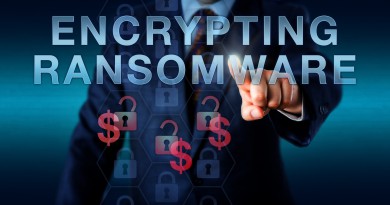Why is Wall Street Embracing its Biggest Threat?
Overstock.com’s progressive CEO Patrick Byrne announced that the Securities and Exchange Commission had approved their plans of issuing stock over Blockchain – the vast online ledger that runs the bitcoin digital currency – just before Christmas of last year.
It was a monumental event for Blockchain. By using cryptographic algorithms in a massive network of independent computer, Blockchain – in theory – can track the exchange of stock, bonds, and other currency in a more efficient, accurate, and open manner. But it was not until about a month later that a “bigger moment” arrived.
The Depository Trust & Cleaning Corporation (DTCC) urged the entire financial industry to work in partnership on the Blockchain technology. DTCC president and CEO Michael Bodson said, “The industry has a once-in-a-generation opportunity to reimagine and modernize its infrastructure to resolve long-standing operational challenges. To realize the potential of distributed ledger technology in a responsible manner and to avoid a disconnected maze of silo-ed solutions, the industry must work together in a coordinated fashion. ”
The DTCC delivered such a direct statement and holds a central role in the stock market that it was a big deal for them to deliver that kind of message. They oversee the whole stock settlement system – one which allows stock to change hands after a trade – and it’s co-owned by the largest investment banks and other financial institutions on Wall Street. DTCC chief technical architect Robert Palatnick adds, “We’re owned by the industry and everything we do is at the request of the industry.”
The SEC had approved plans of issuing stock over Blockchain – the vast online ledger that runs the bitcoin currency.
If the DTCC plans on embracing the blockchain, it could be thought of as a sure sign that Wall Street wants to embrace it. Bodson’s statement shows the intention not just of his company but also of many others in his industry. And since the DTCC control the actual transactions that transpire in the stock market, they are in the best position to actually make the blockchain revolution push through.
Josh Galper of financial consulting firm Finandum – which has been closely following the rise of blockchain technologies – said, “DTCC is staking out a claim to be an organizing group within the financial services industry around the blockchain.” He adds that through the DTCC, the market’s big companies are hoping they can have control and influence on the next group of blockchain products.
This is believed to be an ironic development in the business. The DTCC and the industry it embodies are adopting a technology that could overturn them eventually. It appears that Wall Street has taken a lesson from Silicon Valley – embracing your biggest threat might be the only way to protect yourself.
Overstock’s Byrne admits that the DTCC is a big reason he started to look into blockchain as a way of “democratizing and streamlining the financial market”. Byrne was against a Wall Street loophole “naked short-selling” – saying the DTCC was partly to blame for this practice. He claimed the DTCC was not properly regulating stock settlement, allowing Wall Street players to sell share they did not have. If blockchain was used as a stock settlement system, loopholes like this would not be possible, Byrne added.
That is only a part of Byrne’s vision. The DTCC certainly does not agree with the claims that they failed in policing the system, but blockchain could potentially remove the suspicion of such loopholes.
A statement released by the organization reads, “The premise of the Bitcoin platform—a decentralized, trustless, replicated ledger of transactions—is the virtual opposite of the centralized, trusted, guarded, model of modern securities processing, which has long relied upon DTCC, among others, as a central authority.” It is believed that this is the DTCC’s way of “embracing an existential threat”.
It is worth noting that the DTCC is also one of the founding members of a sweeping open-source software project which aims to promote the blockchain idea across the business world. Guided by the Linux Foundation (the non-profit organization that supervises the Linux operating system – the software that serves as the foundation of the modern Internet), this new blockchain-inspired effort was originally called the Open Ledger Project. It was only until recently they changed their name to Hyperledger – while also unveiling governance structure meant to push collaborations across the laundry-list members. Their membership boasts of big tech companies IBM, Intel, and Cisco; as well as financial bigwigs JP Morgan, Wells Fargo, the London Stock Exchange, and of course, the DTCC.
The DTCC’s Palatnick says that his organization’s focus is collaboration, as so many different companies have explored the use of blockchain in the financial world. An overarching effort to build systems that work across all companies involved is needed for the idea to work. But Palatnick adds, “Many firms were doing private experiments on this collaborative technology, which seemed a little counterintuitive to us. We saw a chance to use our role as industry-owned to create a direction for the industry, and help lead the industry.” According to Palatnick, the financial industry must work in a considered and collaborative way for the financial industry to get ahead of the tech curve.
The collaborative approach is the right idea given the nature of the blockchain technology. If a company builds its own blockchain system for their organization, it would not be useful to others outside of the company. The blockchain works well as a distributed ledger not controlled by just one organization; a ledger that Palatnick describes as “a single indisputable version of the truth.” Wall Street has used the DTCC as the only organization that oversees the truth of the settlement system, but in theory with blockchain, this can be controlled by a network of machines and an open ledger that all parties involved can police.
Patrick Byrne thinks that the blockchain can potentially reinvent countless markets. On top of shoring up the stock settlement system, Byrne thinks it can also streamline and democratize the stock loan market. At any given moment, the global financial marketsspans about US$101 trillion in securities and about US$1.7 trillion is out on loan. Byrne criticizes the market is controlled by a small number of banks and that they run the market according to their own needs. The blockchain, according to Byrne, can open up the market and allow anyone to participate and track the ownership of a specific stock at a specific time.
Byrne adds that the blockchain could be viewed as a way of reinventing the public stock market as a whole. As Overstock’s plan of issuing company stock over the blockchain has been approved by the SEC, Byrne sees this as an approach for companies to raise funds, a new means to IPO. As he sees it, the entire stock market could be placed on the blockchain – a view echoed by Nasdaq’s top executives.
Galper, on the other hand, is part of the group that views this with skepticism. He says that the stock loan market isn’t as broken as Byrne says, and that it is hard to judge how well issuing stock over blockchain would fare. Blockchain can’t operate as fast as the high speed trading of the stock market. As Byrne attempts to reinvent the stock market, State Street – on of the banks he is challenging – has joined the Hyperledger project. A large number of other big players from Wall Street are also looking into these ideas.
Nasdaq is already building its own private stock exchange using the blockchain. Goldman Sachs is investing in Digital Assets Management – a blockchain startup run by former JP Morgan executive Blythe Masters. Galper adds that the whole movement takes on added meaning with the DTCC’s involvement, saying, “a DTCC investment really makes it real.”
However, it is not guaranteed that the DTCC will take the blockchain idea to its full potential. A truly distributed blockchain-based stock settlement system could take out the need for the DTCC.
The DTCC is not fully embracing the blockchain – the one that underpins bitcoin across the Internet on numerous independent machines. The DTCC is exploring a newer version of the blockchain that businesses could run on their own machines through the Hyperledger project. Palatnick says that “one system is really aspirational” when referring to the plausibility of a single ledger that everyone uses. What’s more realistic is establishing standards allowing banks and other institutions to connect their private ledgers to one another.
Byrne works with his blockchain through a subsidiary of Overstock called TO – a name inspired by the stock settlement system. In most cases these days, it takes around 3 days to settle a stock trade. While trades are made in an instant, it can take as long as 3 days for the actual transaction to close. Byren believes that with blockchain, trades can be made in an instant, too. Galper says that closing this gap could save banks billions of dollars in regulatory capital charges. He explains that banks are required to hold capital in reserve against unsettled transactions to hedge against the risk that the do not settle. Galper says that with blockchain, stock settlement could occur in an instant, however, banks might not be willing or able to go that far.
Galpar concludes “ there’s a lot that happens outside the technology”, humans can get in the way. Better technology might make some parts of the market run in a seamless manner, but people will almost always make it more complicated than it has to be.
Comprehensive multi-device protection for you and your family for up to 6 PCs, Macs, Android, and iOS devices. For more info click here.





